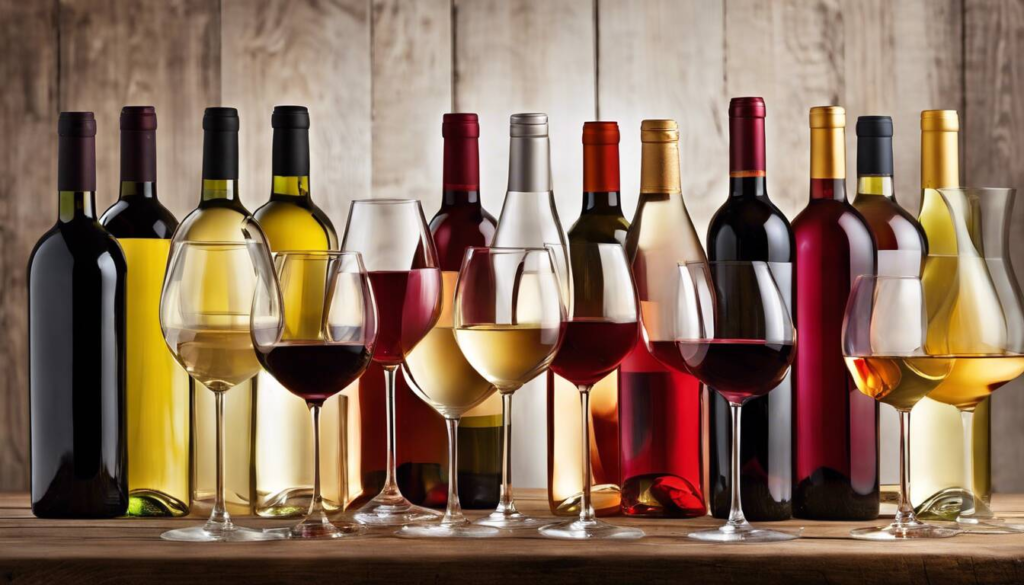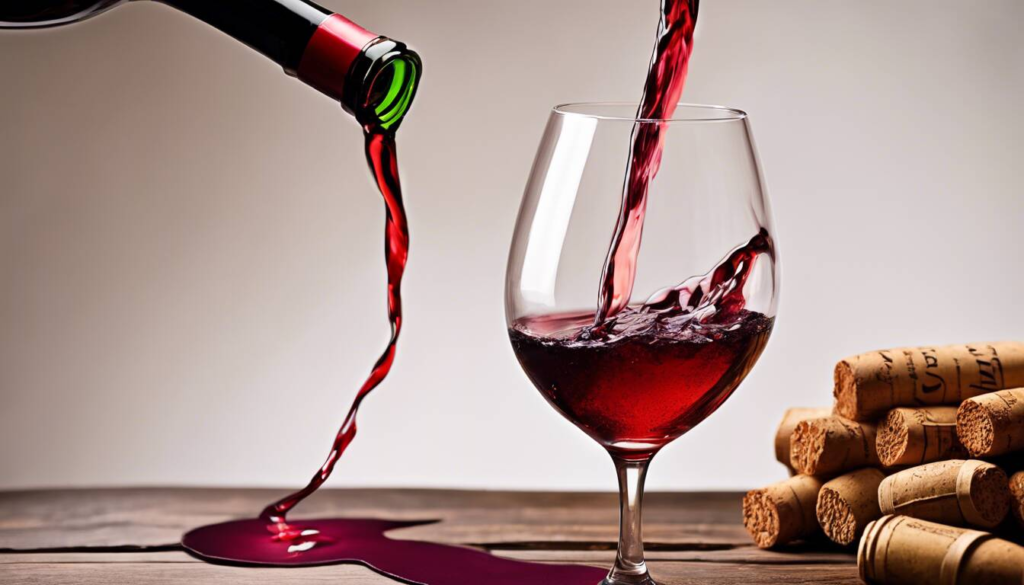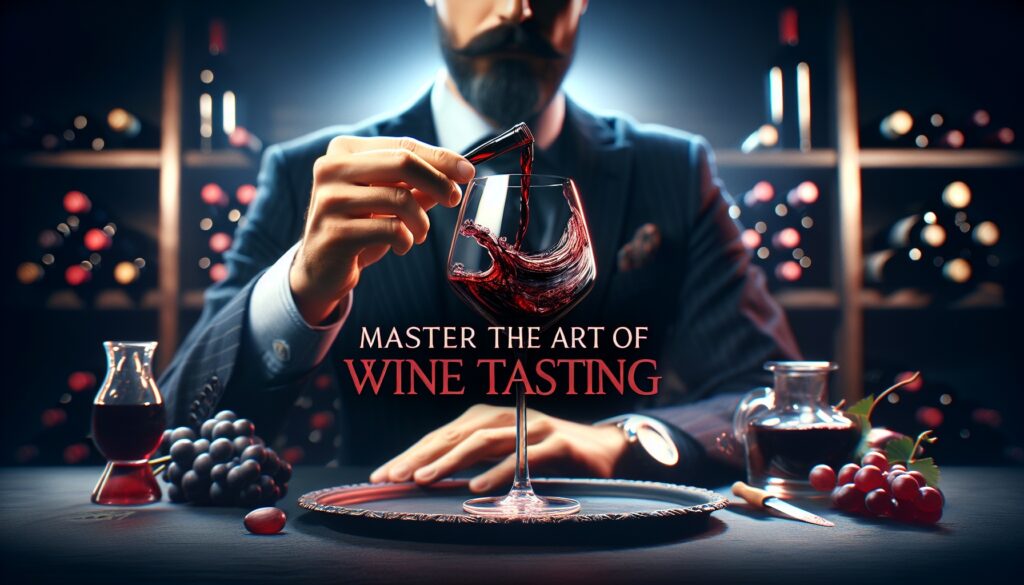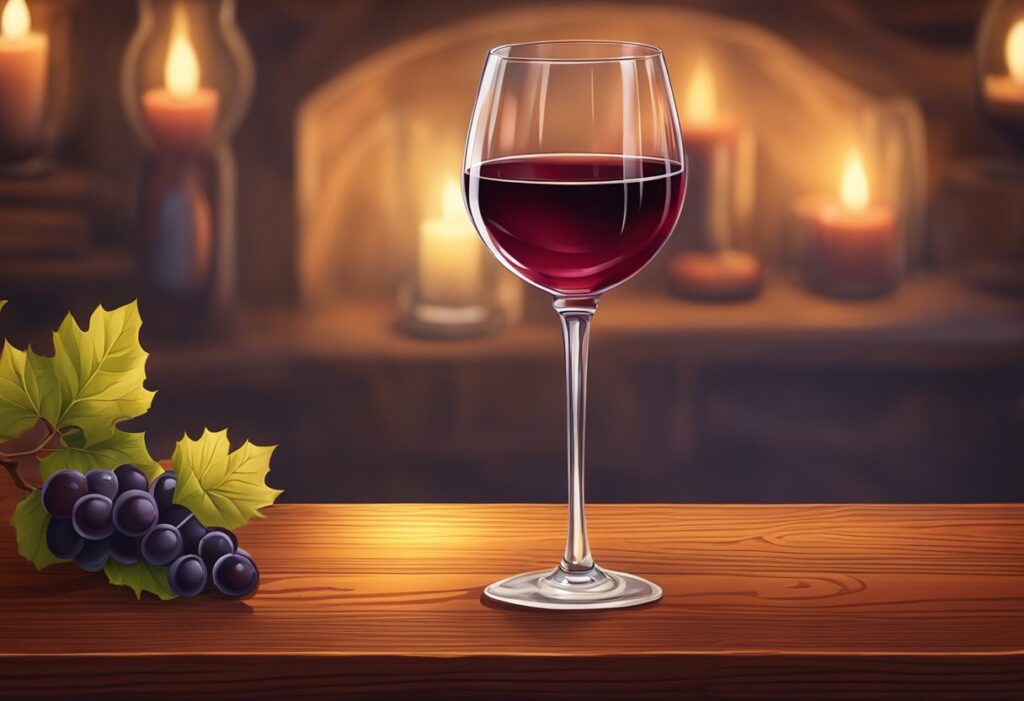Wine tasting is an art made accessible by learning the primary preferences first. Your personal palate, whether you lean towards red, white, rosé, sweet or dry wines, becomes your compass in this journey. Remembering every grape’s tale can be daunting but knowing your own flavor preference eases this journey. From there, learning techniques and etiquette comes naturally. So let’s explore your taste buds first.
Beginners can approach wine tasting by first examining the wine’s appearance, then smelling the aromas by gently swirling the glass, taking a sip to evaluate taste and texture, and considering the aftertaste. It’s essential to take your time with each wine, cleanse your palate between tastings, and familiarize yourself with basic wine terminology to enhance your experience. For those looking to delve deeper into the world of wine, exploring beginner-friendly resources such as “Wine Folly”, “The Wine Bible”, and educational YouTube channels like “The Unknown Winecaster” can be particularly helpful.

Essential Tips for Wine Tasting Beginners
So, you’re ready to explore the world of wine tasting—exciting! But before we start swirling and sipping, it’s important to lay down some essential tips to guide our journey. Let’s begin by uncovering our personal preferences, which will serve as our compass in this flavorful adventure.
Know Your Preferences
Before embarking on your wine tasting expedition, take a moment to reflect on your personal flavor palette. Are you inclined towards the richness of red wines, the crispness of white wines, or the delicacy of rosé? Understanding your unique palate preferences is akin to discovering your favorite colors on a painter’s palette—it provides a sense of direction and lays the foundation for an enriching tasting experience.
This understanding will not only guide your wine selections but also enhance your appreciation and enjoyment of each sip. Take your time exploring different styles and varieties to truly grasp what resonates with your taste buds. The beauty of wine lies in its diversity, and embracing this diversity is the first step toward becoming a seasoned wine taster.
Stay Hydrated
As we venture into the delightful realm of wine tasting, it’s easy to get lost in the rich flavors and captivating aromas. However, it’s crucial to remember the importance of staying hydrated. Sipping water between tastings acts as a palate cleanser, ensuring that each wine can be savored without interference from residual flavors.
In addition to cleansing the palate, staying hydrated prevents dehydration and allows you to fully appreciate the nuances and subtleties of each wine. It’s like hitting a reset button for your taste buds before venturing into a new wine territory.
Take Notes
Now, you might think that taking notes during a leisurely activity like wine tasting isn’t necessary. But trust me, jotting down your thoughts on each wine can be invaluable. Whether you prefer a classic pen-and-paper approach or opt for a digital companion in the form of a wine tasting app, recording your sensory experiences allows for reflection and creates a treasure trove of memories.
By noting the flavors, aromas, and overall impressions of each wine, you have a resource to track your preferences and recall the wines that captivated your senses. A simple phrase or two can transport you back to that enchanting Pinot Noir or that refreshing Sauvignon Blanc.
Armed with an understanding of our individual preferences and equipped with hydration and note-taking strategies, we are primed to not only revel in the artistry of winemaking but also create enduring memories with every glass we delight in.
With these foundational insights in tow, let’s now set our sights on mastering the swirl and smell method—one of the pivotal pillars of appreciating wine at an entirely new level.
Mastering the Swirl and Smell Method
The act of swirling a glass of wine may seem indulgent, but it’s an important step in experiencing all that a wine has to offer. When you gently swirl your wine, you unlock its hidden scents by mixing in air with the wine, releasing aromas trapped in the liquid. If it’s white wine, you’d want to hold the glass by the stem to avoid warming the wine with the heat from your hands.
The choice to hold the glass by its stem is more than just an etiquette nicety. It serves as a practical measure to maintain the temperature of the wine, especially relevant for colder white wines or sparkling varieties. In holding the glass by its stem, distance yourself from inadvertently contributing excess body heat to the drink—particularly important in warmer climates or settings.
The Science Behind Swirling
Giving your glass a gentle swish actually has a scientific basis. During this process, volatile compounds in the wine evaporate and rise up from the surface. These compounds carry with them the characteristic scents of the wine, which then become easily detectable to your nose.
Imagine it as though you are waking aromas from their slumber within the wine. Just as certain flavors come alive when you add seasoning to food, swishing your glass lets those nuanced fragrances blossom.
After giving your wine a delicate swirl and allowing its scents to rise, lift it up to your nose and take a slow, gentle sniff. Pay close attention to the various scents that emerge—don’t worry if they aren’t instantly recognizable. You might pick up on notes of fruits like apples or berries, flowers such as roses, or maybe even hints of spices like cinnamon or nutmeg. If it’s a red wine, keep an eye out for earthy aromas too.
This preparatory stage tunes your senses in preparation for the recognizable tasting experience.
So take your time and savor each whiff. You’re about to embark on an aromatic journey that will lead you deeper into understanding and appreciating your favorite wines!
The world of wine tasting is ripe with intricacies and delights, but no aspect is more fundamental—and delightful—than mastering the art of pouring and sipping. Let’s uncork this next segment and explore how every drop can hold clues about the bottle’s story and origin.
Perfecting the Art of Pouring and Sipping

Pouring wine isn’t just about filling a glass; it’s about setting the stage for a wine-tasting experience. The way you pour and sip your wine can elevate the sensory journey, allowing you to fully appreciate its nuances. Here’s how you can master the art of pouring and sipping, step by step.
The Perfect Pour
Whether it’s a crisp white or a velvety red, pouring wine is an art form. When you pour, aim to fill the glass to a level that allows ample space for swirling without spilling. This typically means filling the glass to about one-third to one-half full, creating enough space to allow the wine to aerate properly. The act of pouring itself can be quite mesmerizing as you watch the liquid cascade into the glass, setting the mood for a delightful tasting experience.
Remember: Each bottle of wine brings its own character. While some wines might benefit from a swift and steady pour, others might be best enjoyed with a more deliberate and gentle touch.
The Sensual Sip
Now comes the moment we’ve been waiting for – the sip! Take a small sip of wine and let it coat your entire palate. Swirl it around your mouth for a few moments, allowing the flavors to unfold. Pay meticulous attention to the wine’s body, acidity, sweetness, and tannins as they dance across your taste buds.
Pro Tip: An optimal pouring technique combined with thoughtful sipping heightens your tasting experience by unlocking layers of aromas and flavors, enabling you to grasp the true essence of each wine.
Some may rush through this step, gulping down their wine without giving it a chance to reveal itself fully. However, true connoisseurs know that taking time with each sip is like unlocking a treasure trove, revealing subtle notes that may be missed otherwise.
Analyzing the Finish
As you savor each sip, take note of the finish or aftertaste that lingers. Does it vanish swiftly or linger on your palate? Is it smooth and soft or bold and robust? These observations can help identify specific qualities unique to each wine.
Reflecting upon the finish is akin to enjoying a fine dessert – it’s about relishing each lingering moment long after the initial taste has dissipated.
Much like savoring a piece of chocolate, where each small bite unfolds new flavors and textures gradually on your tongue, analyzing the finish adds depth to your overall tasting experience.
By mastering the art of pouring and sipping, you’ll elevate your wine appreciation skills, becoming attuned to even the most subtle characteristics hidden within every glass. So go forth and pour yourself a glass—sip slowly and savor every moment!
As you immerse yourself in the intricacies of wine tasting techniques, you embark on a journey that not only enhances your enjoyment but also enriches your understanding of this captivating world. Now, let’s shift our focus to curating your very own personal compendium of exquisite oenophilic experiences—starting with identifying wines that captivate your senses.
Starting Your Personal Wine Tasting Guidebook
Imagine yourself at a picturesque vineyard, savoring a glass of exquisitely aged wine, discerning every flavor on your palate. The producer, vintage, and region all merge into a harmonious blend. Perhaps you yearn to etch that moment into your memory forever or even replicate it. This is where your personal wine tasting guidebook becomes indispensable.
By meticulously recording the fine details of each wine—the name, producer, vintage, region, alongside your unique tasting notes—you’re not just creating a record; you’re cultivating a repository of knowledge that will appreciate with every entry. It’s akin to curating an anthology teeming with personal revelations that narrate the story of your evolving palate.
Consider starting a wine tasting notebook or journal to document your wine tasting experiences.
Now, let’s delve into the components of a comprehensive wine tasting guidebook and the necessary details for each entry.
| Components | Details |
|---|---|
| The Wine’s Name | Tells about the type of grape or grapes used in making the wine. |
| Producer | Each winery has its own unique style and history, influencing the character and quality of the wine. |
| Vintage | The year the grapes were grown can significantly impact the taste. |
| Region | Different regions produce varying styles of wines due to climate, soil, and winemaking traditions. |
| Personal Tasting Notes | This section blends your thought process and sensory experience. Includes colors, aromas, flavors, textures, and the finish of each wine. |
Imagine leafing through your guidebook years later. You would not just revisit the wines but also the memories linked to them—perhaps a special occasion or a newfound revelation. This personalized collection will serve as both a resource for future tastings and a chronicle reflecting how your enjoyment and understanding of wine have evolved over time.
In 2024, you found an exceptional bottle from Sonoma County that you wanted to share with an out-of-town visitor. You reached for your guidebook to look up which wine it was, enhancing the moment even more.
Creating and maintaining your personal wine tasting guidebook is an investment in understanding and enjoying wine that continues to yield rewards—a treasure trove of learning experiences waiting to be unfurled.
The journey doesn’t stop at crafting your personal guidebook; it extends into mastering the art of recognizing subtleties and nuances in the wines you encounter. Let’s embark on refining this skill as we uncover more about recognizing your wine tasting mastery.
Recognizing Your Wine Tasting Mastery
Congratulations on taking the first steps towards becoming a true wine connoisseur! As you continue to immerse yourself in the world of wine tasting, you’ll notice your abilities sharpening and evolving. It’s an exciting and rewarding journey, and as you progress, recognizing subtle nuances in different wines will become second nature.
One of the key signs of your advancing mastery is when you can identify specific flavors and aromas in different wines. Maybe you pick up on the unmistakable scent of blackberries in a bold Cabernet Sauvignon or discern the delicate notes of pear and apple in a crisp Chardonnay. Each new discovery adds another layer to your understanding and appreciation of wine, solidifying your skill and experience.
Furthermore, as you taste more wines, paying attention to the influence of oak or the impact of aging on wine becomes crucial. You might start noticing the subtle smokiness imparted by oak barrels or appreciate how extended aging has softened the tannins and enriched the complexity of a red wine. This level of discernment isn’t just impressive; it showcases your deepening knowledge and expertise in the world of wine.
However, it’s important to remember that mastery in wine tasting doesn’t mean having all the answers; rather, it’s about developing your palate and honing your ability to appreciate and evaluate wines with nuance and insight. It’s not about being right or wrong; it’s about enjoying the journey and taking pleasure in discovering new dimensions to the wines you taste.
For instance, think of how painters refine their techniques over time, learning to balance colors and textures with increasing precision. Similarly, your growing palate becomes like an artist’s brush, enhancing your ability to perceive and interpret the intricate elements within each sip of wine.
So, as you take note of these developments in your wine tasting skills, remember that this evolution signifies not only a growing mastery but also a developing passion for the art and science of wine.
As your journey into the world of wine continues, you may find yourself intrigued by the significant role that different types of wine glasses play in enhancing the tasting experience.
Understanding Wine Glasses and Their Importance
When it comes to wine, the type of glass matters more than you might think. While purchasing specific glassware for different wines might seem like an unnecessary splurge, it actually has a significant effect on how a wine tastes and smells. It’s not just about showing off your collection at a dinner party; the right glassware can actually make your wine taste better, believe it or not!
The same goes for wine glasses—they’re designed to highlight certain aspects of the wine. The shape and size of a glass can affect how much air gets into the wine, which changes its flavors and aromas. A glass with a wider bowl will expose more surface area of the wine to the air, bringing out the bolder flavors in red wines. On the other hand, a narrower bowl can help preserve the delicate aromas of white wines.
Wine Glass Shapes
Let’s take a closer look at different types of wine glasses and what makes them unique:
| Description | |
|---|---|
| Red Wine Glasses | These usually have a larger bowl to give more space for the aromas to develop. The wider opening also allows some of the alcohol vapors to evaporate, enhancing the aroma. |
| White Wine Glasses | White wine glasses typically have a smaller bowl to maintain delicate aromas since white wines often have more subtle scents that can be overpowered by too much exposure to air. |
| Sparkling Wine Glasses | For sparkling wines like Champagne or Prosecco, glasses with narrower bowls are used to help maintain carbonation and may sometimes have a tulip shape. |
| Universal Wine Glasses | Some people prefer to use universal glasses, versatile enough to handle both red and white wines without compromising their individual characteristics. |
It’s incredible how something as simple as the shape of a glass can make such a difference to our enjoyment of wine. But don’t just take my word for it—next time you’re at a restaurant or winery, see if you can spot how different glasses are used for different wines!
Wine tasting can truly be an enriching experience when you understand the impact even minor details like glassware can have on your enjoyment of wine. So, next time you raise a toast, pay attention to the glass – it might just give you a whole new perspective on your favorite wine.

